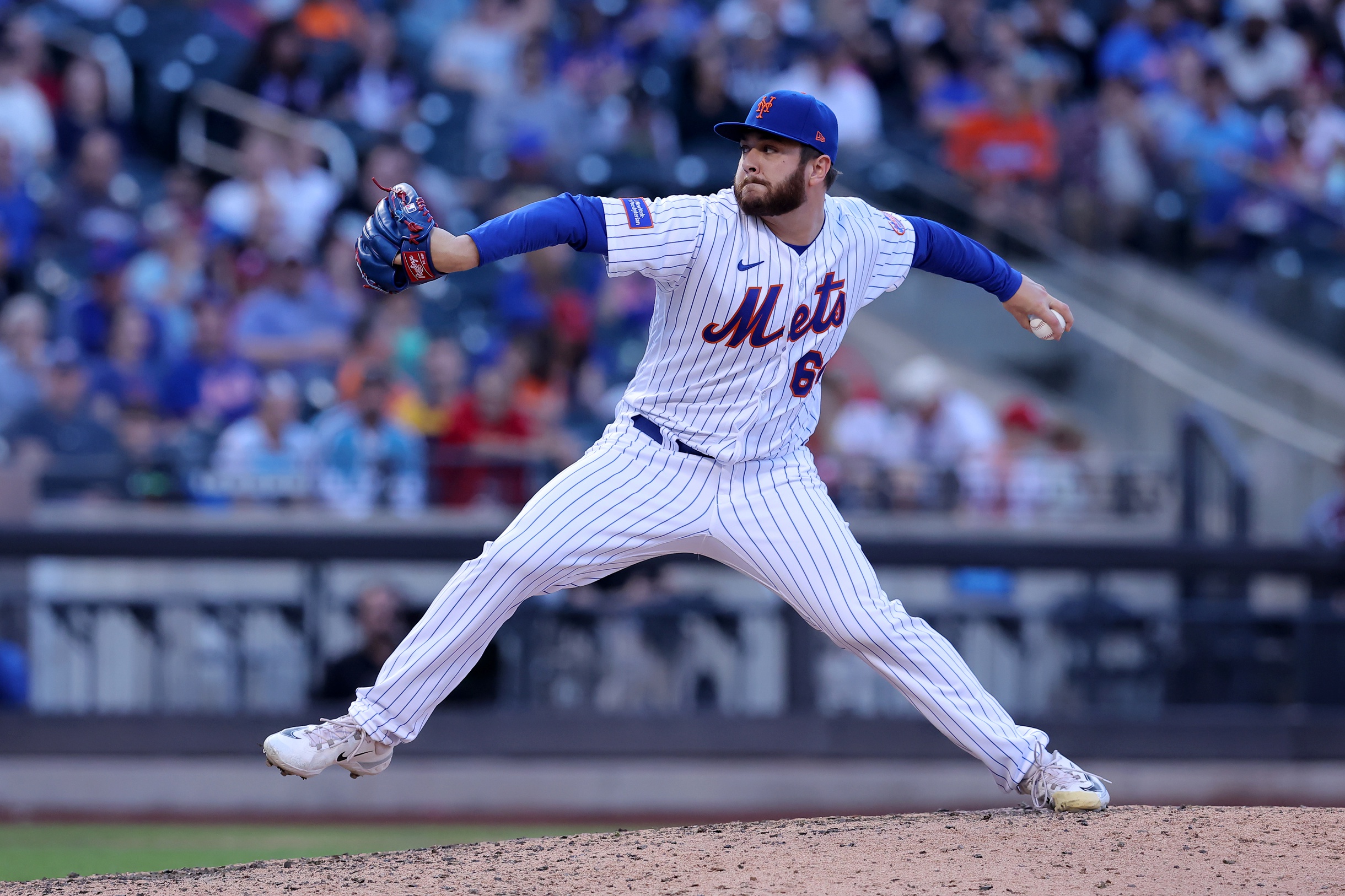ARLINGTON, Tex. -- As much as it can be discerned from player development staffing announcements, biomechanist became a regularly filled position for the White Sox ahead of the 2020 season.
They weren't breaking any new ground across the league then, nor are they now, but it only takes a standard-level of organizational familiarity to know that many fans would be surprised at how often biomechanics are being referenced by White Sox personnel this season. Not the capability, but it being put into action -- for Miguel Vargas' hand adjustment, for Colson Montgomery's Arizona hitting sabbatical, for tweaks to Hagen Smith and Noah Schultz's deliveries, for a start where Davis Martin had a seemingly random velo jump that was actually spurred by a breakdown of how much force he was using to move down the mound.
More to the point, Sox coaches speak about the information provided by staff biomechanists Aaron Trunt and Motoki Sakurai as indispensable to their work.
"We could be seeing something with our own two eyes, but [Trunt] can really magnify through his lens, on his side of things," said hitting coach Marcus Thames. "I don't just go in naked and say 'Let's do this,' I always call him and say, 'Hey man, what are you seeing?' I always try to make sure we're not messing with something we shouldn't."
"Our performance staff, our biomechanists, and the hitting staffs and pitching staffs, we have biweekly calls, there's reports that are going out every week," said director of hitting Ryan Fuller. "So we have flags that come up when something is off, and being able to address it quickly rather than waiting for performance to drop and then it's, ‘Oh man, what happened, how do we get here?’ So staying on top of the ball, connecting the weight room to the cage as much as possible."
Since the term "biomechanics" in application to sports is really just seeking to understand how bodies move and function to maximize performance, hitting and pitching coaches have technically been working to find solutions in the world of biomechanics since time immemorial. If this is just a fancy way to signal that the White Sox are leveraging the analysis of two staffers with PhDs and motion-tracking technology, it's still a necessary flag to fly, since in the case of finally installing Hawk-Eye tracking systems at their minor league affiliates, it could be their route to wringing vital results out of their top draft picks.
"[The Birmingham Barons] were the last team to get [Hawk-Eye] in the Southern League, and we were retroactively able to get some of [Hagen Smith's] earlier games from this season," said Brian Bannister, discussing the process of tweaking the delivery of last year's fifth-overall pick. "Once we were able to compare that data to what he was doing as the National Pitcher of the Year in college with [Arkansas pitching coach Matt] Hobbs and go through his catch play routine, the drills they were doing when he was at his best -- everybody references the Oregon State game -- we were able to grab some of that data and get back to some of those things."
Smith's wildness and bout of elbow soreness provided a pretty specific cause for intervention, and was ample reason to put him on force plates and drill down on how much force from his leg had seeped out of his delivery. But the real step forward for the organization is the more proactive monitoring, so that issues can be addressed at earlier stages.
"[Trunt] will break down the game and see if there are any trends that are changing with any of our pitchers, and then I'll address it with them," said pitching coach Ethan Katz. "Last year it was a big thing when Burke came up here that we noticed his velo was dropping at pitch 85, so then we can see what's breaking down to where we can be ahead of it.
"If guys are not using their legs or stuff pops up, like for example [Jonathan] Cannon, his right knee was a little dinged up earlier in the season, so we could see he wasn't utilizing it. [Tyler] Gilbert as well, he had the knee thing we were monitoring and he wasn't getting as deep into his back knee as he normally did and showed that he was favoring it. So we were like, 'How do you feel? This is where you've been, this is where you're at, this is where you need to get to,' and then we prescribed some drills to help overcome that."
Katz has been in the organization long enough to recall watching college video of pitchers back in 2021 to get a feel for what a struggling pitcher's mechanics looked like at their best, because data at the team's own affiliates wasn't as readily available. While that information gap is still in the process of being addressed in the lower minors, the front office has had ways signaling their intent.
"That's been an organizational effort, not only in the investment in technology but with the support," said Chris Getz. "You can have the technology and get the data, but if you don't have the ability to break it down properly and the coaches to carry it out, you're not going to take advantage of it. We get daily [biomechanical] reports, and whether it be on the defensive side, the pitching mechanics or hitting mechanics, it's just allowed us to make development progress at a greater pace."
Fuller was referring to the minor league side and Getz was talking about the majors, lest their descriptions of frequency cause any confusion. If there's a benefit to being a late adopter, it certainly hasn't been enjoyed over the last five years of White Sox baseball. But while sitting on the sidelines as other organizations have gone through the inevitable initial steps of spraying a firehose of new data around with little direction, the Sox are trying to be intentional with their application.
"Sometimes I'll get the information or have stuff and I'll just leave it alone because [the player] is in a good spot and I don't want to disrupt that," Katz said. "We have a very good process here," and I've heard from other organizations where it's like too many cooks in the kitchen and it really gets to players. I love our process, how Aaron breaks it down and gives us the information needed to in turn give it to the players.
"These guys, if you overload them too much, you can go down some really bad rabbit holes. They can go down some places you don't want them going and just lose the player, where he possibly was at the top of his game, because you gave him too much information."
Fans, some team employees, and even some media members can dream of a Justin Ishbia capital infusion radically changing the White Sox's financial capabilities at some later date and time. But in Sox baseball operations, they are quite plainly still talking about leveraging their small player development operation into making the South Side a place where careers can be kickstarted or resuscitated. And if they're certainly not going to offer the most robust biomechanical data in the league, they can strive to be the team with a five-star boutique operation that delivers it with a bespoke, artisan touch.
"Certainly you still have to have a feel in how it's delivered," Getz said. "The player has to be open. Now because it's become part of the culture, players are much more comfortable and tend to have not only a willingness, but a hunger to learn more so they can make quicker adjustments. But ultimately it comes down to being able to have coaches that are able to communicate effectively. And I feel like we're in a much better spot now than we have been in the years past."






